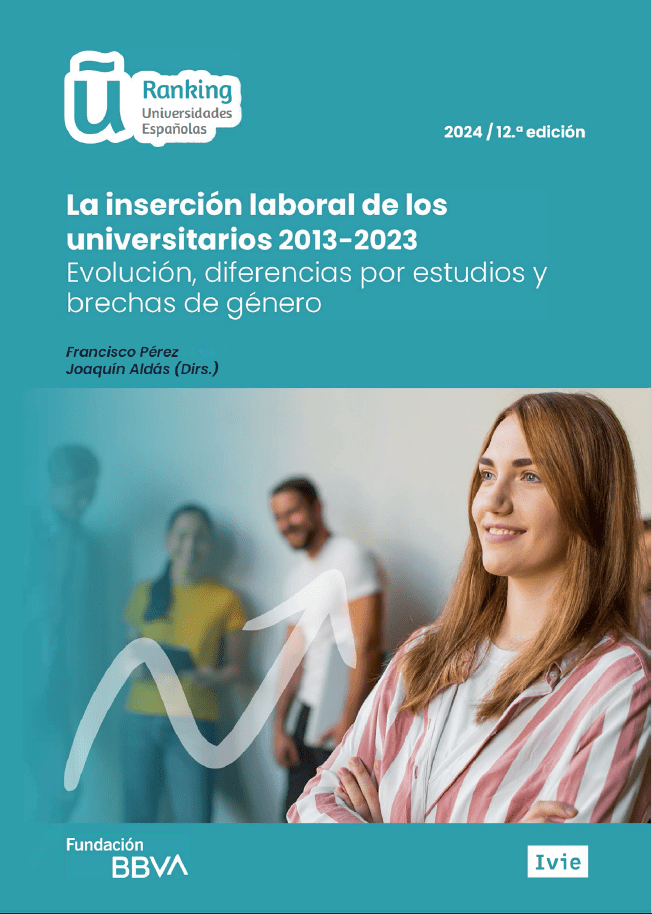
PublicationU-Ranking Reports 12th edition
La inserción laboral de los universitarios 2013-2023
Evolución, diferencias por estudios y brechas de género
The evolution of the employment of university graduates in Spain has seen significant positive changes over the last decade, which require a thorough review of the diagnoses regarding problems in their labor market insertion. These changes are documented in this report, directed by Francisco Pérez and Joaquín Aldás, which analyzes the evolution from 2013 to 2023 of the labor market insertion of young university graduates.
The research conducts a detailed review of the information available to analyze the situation of graduates in their early years of employment while differentiating between those who joined the labor market in different cyclical contexts.
Firstly, the study provides an overview from two perspectives. On the one hand, it examines the evolution of the labor market in which graduates are inserted, focusing on the youngest (those between the ages of 22 to 29). On the other hand, it analyzes the evolution and supply of both bachelor’s and master’s degree university graduates, between 2013 and 2022, paying special attention to significant changes in the number and composition of graduates over the last decade, according to type of institution and field of study.
Using information from the Spanish Ministry of Science, Innovation, and Universities’ database on university graduates’ Social Security affiliation, the research delves into recent changes in the labor market insertion of the last six cohorts (from 2013 to 2018) and analyzes their characteristics and differences by field of study four years after graduation. Finally, the study addresses the differences in labor market insertion characteristics between men and women. After reviewing the university pathways and performance of individuals of both sexes, it assesses whether there is any gender bias in the quantity and quality of labor market insertion.
